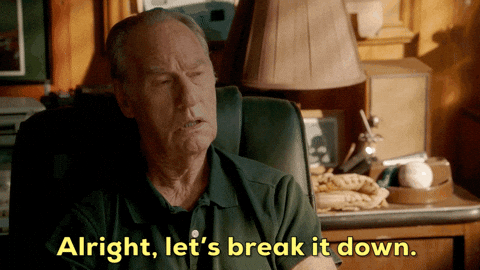- Fucked Finance
- Posts
- Weekly Lesson Wednesday - Feb 21st, 2024
Weekly Lesson Wednesday - Feb 21st, 2024
How to Wheel
Weekly Lesson Wednesday📝
Wheeling Options.

Lesson
The Wheel Strategy

Ladies and Gentleman,
I know it was supposed to be only one month of options, but who’s gonna stop me! It’s week 6 now and I am back with more!
The Wheel Strategy
Think of it like a wheel of cash flow, fueled by cash-secured puts, and covered calls. Last week we dove into the exciting world of covered calls, but lets just do a quick de-brief on cash-secured puts or selling a put, however you want to say it.
Cash-secured puts: Selling a put option, which is locking into an options contract that gives you the obligation to buy shares of the underlying stock at the desired strike price. If the stock is at or below that strike price upon option contract expiry, you then are obligated to buy that stock at the agreed-upon strike price you locked in prior.

If you sell one $10 put option with a 30-day expiry. You just locked into a contract saying, in 30 days if the stock is at or below $10 you are obligated to buy it at $10 regardless of market price (in some cases you may be forced to buy it (exercised) before expiry). Even if the stock is at $5 at the end of the 30 days, you have to buy for $10, that was the contract obligation.
The benefit of locking into these contracts (selling these puts) is they pay you to do so, the market will pay you a premium to lock into the obligation to buy. So you get paid money to buy a stock, good deal eh.
The risk comes with the expiry date, on a 4-7 day expiry you won’t get paid much because there isn’t much risk, there isn’t much time for the stock to fall below your buy price, so the market realizes that, and pays you less.
Less risk = less reward.
However, if you are doing 30+ day contracts, that now gives the stock a lot of time to drop below your buy price (as mentioned in the example above). You very well could be overpaying for that stock now, so the market will pay you more to have bigger balls, or as I like to say it, CONVICTION.
How to Wheel
Alright, I hope you understand both aspects of the wheel. Covered calls, and Selling Puts.
Now put em together. We now know what happens when you sell a put.
A.) Contract expires above your strike price (OTM: Out of the money) you keep your premium and are not forced to buy any stocks.
B.) Contract expires at or below your strike price (ITM: In the money) you still keep your premium but are forced to buy the stock at your strike price.
So if outcome A.) happens, you rinse & repeat, and keep collecting your premiums and stacking dough…. Until outcome B.) comes…
When outcome B.) Happens, you now have 100 shares of the underlying so you can go back and sell a covered call! Doubling dipping in premiums. Tell your wife’s boyfriend that one!
I am not going to explain the outcomes of covered calls because we spent last week doing that, but think of it as a wheel, you keep selling covered calls till your stock gets called away, and then you go sell put’s till your stock gets assigned.

Easy. Simple. Based. You’ll probably beat the market.
However, it isn’t that easy, you need to find the right equities to do it on.
We can get into that next week, but for now, immerse your brains in the idea of premiums flying into your brokerage account.
Thank you
That’s All Folks
Thank you for reading. I hope you learned something new. This strategy is a go-to for me, it keeps the cash flow doing the cash flow thing. Don’t go nuts yet, we still have one more lesson on this. How to find the stocks to do it on.
Cheers,
What did you think about today's newsletter?This helps us keep sending heat to your inbox... |